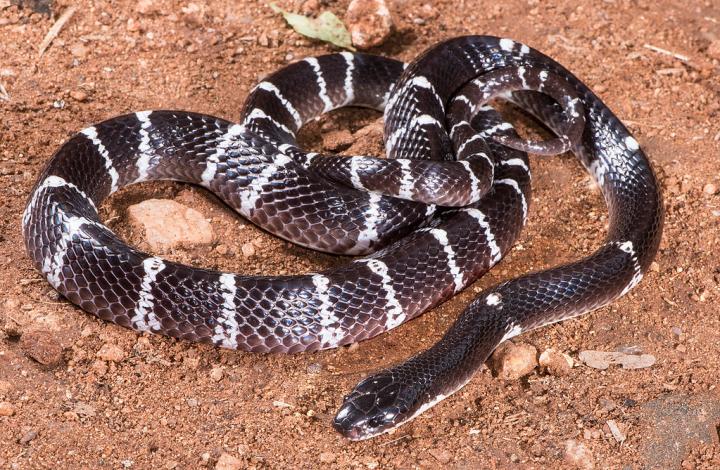Spitting cobras seem to be the only exception and use venom as a defense mechanism.
With the exception of the spitting cobra, researchers studying snake venom say that the evolution of venom was targeted at subduing prey items rather than as a defense mechanism. This goes against the notion that venomous snakes use their venom as a tool to ward off potential predators.

WOLFGANG WUSTER
The Indian krait's (Bungarus caeruleus) bite causes little pain and is seemingly harmless until it is too late.
"We know that snake venom is used primarily for foraging; for overpowering and killing prey,” Dr. Wolfgang Wüster, an expert on snake venom evolution at Bangor University's School of Natural Sciences said in a statement released by Bangor University. “However, we also know that snakes use their venom in self-defense—that's why so many people get bitten, and sometimes killed, by venomous snakes worldwide. We wanted to investigate whether defense was a driver in venom evolution."
The researchers say that snake venom would have to provide near instantaneous pain to deter a predator, much like that of a sting ray, but in their research, it was found that very few venomous snake bites cause immediate pain. This lack of instant pain lead the researchers to believe that venom has not evolved as a tool for defense.
Harry Ward-Smith, a student at Bangor University examined this hypothesis under Wüster’s supervision and obtained more than 400 responses from reptile keepers, herpetologists and fieldworkers about the time-course of pain after the venomous snake bites that they had sustained. What the data showed was that only very few bites and species regularly caused severe and near-instant pain.
"Our results suggest little evidence for widespread evolution of venoms driven by their use in defense, though interesting exceptions likely exist such as the defensive use of venom 'spitting' in some cobras, and these specific cases deserve further study,” Dr. Kevin Arbuckle, senior lecturer in biosciences at Swansea University's Department of Biosciences, said in a statement released by Bangor University.
The full paper,”Fangs for the Memories? A Survey of Pain in Snakebite Patients Does Not Support a Strong Role for Defense in the Evolution of Snake Venom Composition" can be read on the Toxins website.


